#Amelanchier canadensis
Photo

Blue Jay on Shadbush
#bird#blue jay#jay#shadbush#flowers#illustration#drawing#jada fitch#natural#Cyanocitta cristata#wildlife#illustation#art#design#pen and ink#serviceberry#Amelanchier canadensis#Canadian serviceberry#chuckle-berry#currant-tree#blue
518 notes
·
View notes
Text

近所の住宅で塀の中で咲いていた、
白が美しい「ジューンベリー」の花。
ザイフリボク属。
別名:アメリカザイフリボク、
シュガープラム、
カナディアン・サービスベリー、
カラント・ツリー、
シャッドブッシュ。
欧文名:Amelanchier canadensis
26 notes
·
View notes
Video
n462_w1150 by Biodiversity Heritage Library
Via Flickr:
Florae Austriacae, sive, Plantarum selectarum in Austriae archiducatu. Viennæ Austriæ :Leopoldi Joannis Kaliwoda,1773-78.. biodiversitylibrary.org/page/278134
#1773#Austria#Botany#Copper engraving#Graphic media :#Hand colored#Missouri Botanical Garden#Peter H. Raven Library#bhl:page=278134#dc:identifier=http://biodiversitylibrary.org/page/278134#flickr#botanical illustration#scientific illustration#MESPILUS AMELANCHIER#Amelanchier canadensis#bilberry#canadian serviceberry#chuckle-berry#currant-tree#juneberry#thicket serviceberry#shadbush serviceberry#shadbush#shad-blow#shad-blow serviceberry
3 notes
·
View notes
Text
Flower of the Week, 10th April.
The blossom of our Amelanchier Canadensis is an ephemeral beauty. It’s at its peak now but in less than a week is likely to be gone. Fortunately the shrub has a graceful, arching form and produces a spectacular, brightly coloured display in autumn.

View On WordPress
0 notes
Text


Plant of the Day
Monday 1 April 2024
The Amelanchier canadensis (service berry) are covered in a cloud of flowers. This deciduous shrub or small tree provides so much display value with good autumn colour as well blossom. After the flowers dark purple to black berries are produced which are very popular with the birds, I always thought my specimen was prune by pigeons and blackbirds.
Jill Raggett
#Amelanchier#service berry#small tree#deciduous#white flowers#blossom#plants#horticulture#gardens#garden#kent
68 notes
·
View notes
Photo
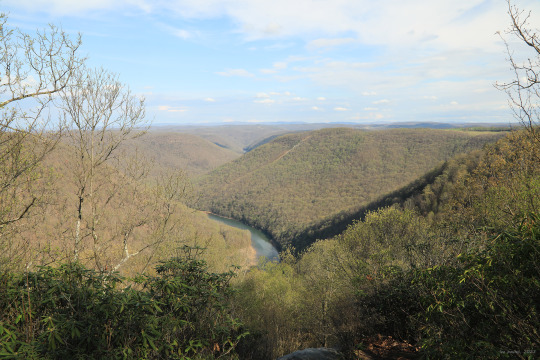

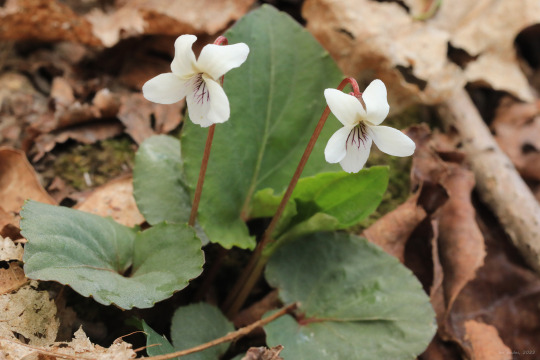





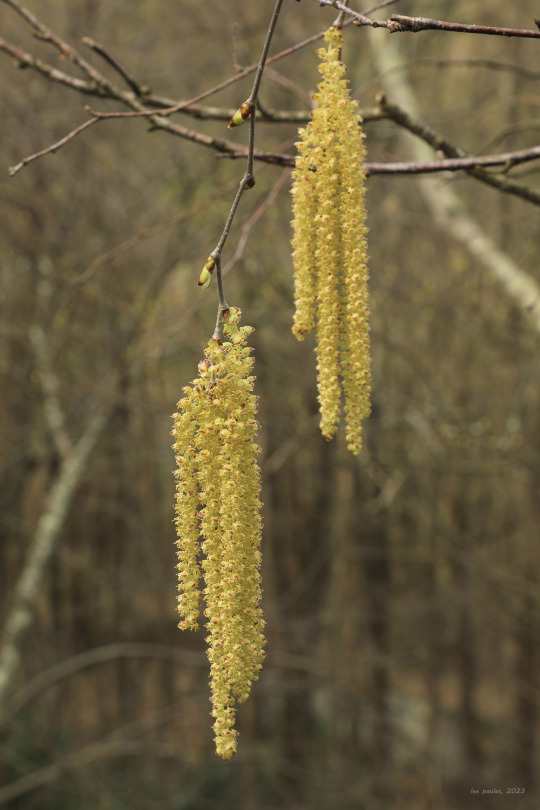
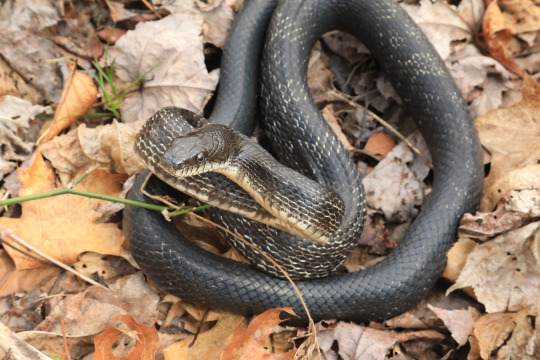
What a gorgeous afternoon for a Mid-April hike in the Cheat River Canyon. Spring’s delicate treasures were out in full force. From top: halberd-leaved yellow violet (Viola hastata); sweet white violet (Viola blanda); broadleaf toothwort (Cardamine diphylla); Carolina spring beauty (Claytonia caroliniana); bloodroot (Sanguinaria canadensis); common blue violet (Viola sororia); Allegheny serviceberry (Amelanchier laevis); sweet birch (Betula lenta) catkins; and a cranky Allegheny rat snake (Pantherophis alleghaniensis) newly out of hibernation.
#appalachia#vandalia#west virginia#cheat river#cheat river canyon#chestnut ridge#snake hill wildlife management area#spring#april#wildflowers#reptile#snake#allegheny rat snake#eastern rat snake#halberd-leaved yellow violet#sweet white violet#broadleaf toothwort#two-leaf toothwort#crinkleroot#carolina spring beauty#bloodroot#common blue violet#allegheny serviceberry#sweet birch#black birch
123 notes
·
View notes
Text
Native Plants I’ve Actually Seen Growing Wild in Southern Ontario
Acer saccharinum (silver maple) --along the sides of highways
Acer saccharum (sugar maple) --GTA ravines
Achillea millefolia (yarrow) --GTA ravines
Allium schoenoprasum (wild chives) --GTA ravines, Ridgetown
Allium tricoccum (ramps) --Niagara region escarpments
Amaranthus retroflexus (redroot amaranth) --fallow areas in the GTA
Ambrosia artemisiifolia (ragweed) --fallow areas in the GTA
Ambrosia trifida (giant ragweed) --parks in the GTA
Amelanchier spp. (saskatoon/serviceberry) --GTA ravines
Arisaema triphyllum (Jack-in-the-pulpit) --GTA ravines
Aronia melanocarpa (black chokeberry) --ravines and parks in the GTA
Asarum canadense (Canada ginger) --GTA ravines
Asclepias syriaca (common milkweed) --fallow areas, ravines, and parks throughout southern Ontario from Windsor to GTA
Asplenium trichomanes (maidenhair spleenwort) --Niagara region escarpments
Betula spp. (birch) --ravines and parks throughout southern Ontario from Windsor to GTA
Bidens spp. (beggar ticks) --GTA ravines
Caulophyllum thalictroides (blue cohosh) --GTA parks
Ceratophyllum demersum (hornwort) --GTA ravines (native in freshwater across the globe anyway)
Circaea lutetiana (enchanter’s nightshade) --fallow areas in the GTA
Commelina spp. (dayflower) --fallow areas in Windsor
Cornus alternifolia (Pagoda dogwood) --GTA wooded areas
Cornus sericea (red osier dogwood) --GTA ravines and in Windsor riverside parks
Crataegus spp. (hawthorn) --GTA ravines and parks
Echinocystis lobata (wild prickly cucumber) --GTA ravines
Elaeagnus commutata (silverberry) --GTA parks and fallow areas
Epilobium ciliatum (fringed willowherb) --fallow areas in the GTA
Equisetum spp. (horsetail/scouring rush) --GTA ravines and fallow areas
Erigeron spp. (fleabane) --GTA parks and fallow areas, Ridgetown
Erythronium americanum (trout lily) --GTA ravines and parks
Eutrochium maculatum (Joe-Pye weed) --GTA parks
Fragaria virginiana (wild strawberry) --fallow areas in the GTA
Geranium maculatum (wild geranium) --Windsor green spaces
Geranium robertianum (herb robert) --Windsor green spaces
Geum aleppicum (yellow avens) --GTA fallow areas
Geum canadense (white avens) --GTA fallow areas
Geum macrophyllum (large-leaved avens) --GTA fallow areas
Gymnocladus dioicus (Kentucky coffee tree) --GTA ravines
Helianthus spp. (sunflower) --GTA fallow areas and parks
Heracleum maximum (cow parsnip) --GTA ravines
Hordeum jubatum (foxtail barley) --GTA fallow areas
Humulus lupulus (hops) --GTA ravines
Hydrophyllum virginianum (Virginia waterleaf) --GTA ravines
Impatiens capensis (jewelweed) --GTA ravines and in Windsor riverside parks
Juglans nigra (black walnut) --GTA ravines
Lactuca canadensis (Canadian lettuce) --GTA fallow areas
Lilium michiganense (Michigan lily) --GTA ravines
Lupinus perennis (sundial lupine) --GTA parks
Maianthemum canadense (Canada mayflower) --GTA ravines
Maianthemum racemosum (starry false solomon’s seal) --GTA ravines and parks
Maianthemum stellatum (starry false solomon’s seal) --GTA ravines
Matteuccia struthiopteris (ostrich fern) --GTA ravines
Monarda fistulosa (wild bergamot) --GTA ravines and parks
Morus rubra (red mulberry) --fallow areas in Windsor, GTA parks
Myosotis laxa (smallflower forget-me-not) --GTA fallow areas
Oenothera biennis (evening primrose) --GTA fallow areas
Onoclea sensibilis (sensitive fern) --GTA ravines
Oxalis stricta (yellow wood sorrel) --fallow areas and ravines throughout southern Ontario from Windsor to GTA
Parietaria pensylvanica (Pennsylvania pellitory) --GTA fallow areas
Parthenocissus quinquefolia (Virginia creeper) --Windsor fallow areas and GTA ravines and parks
Persicaria lapathifolia (curlytop smartweed) --GTA fallow areas
Podophyllum peltatum (mayapple) --GTA ravines and parks
Portulaca oleracea (purslane) --fallow areas throughout southern Ontario from Windsor to GTA (native globally anyway)
Potentilla norvejica monspeliensis (ternate-leaved cinquefoil) --GTA fallow areas
Prunella vulgaris (selfheal) --fallow areas and ravines throughout southern Ontario from Windsor to GTA
Prunus virginiana (chokecherry) --Windsor fallow areas, GTA ravines and parks, Niagara region escarpments
Pteridium aquilinum latiusculum (western bracken fern) --GTA parks
Quercus spp. (oak) --wooded areas throughout southern Ontario from Windsor to GTA
Rhus typhina (staghorn sumac) --parks and fallow areas throughout southern Ontario from Windsor to Collingwood
Ribes spp. (currants) --GTA ravines and parks
Ribes spp. (gooseberries) --GTA ravines
Robinia pseudoacacia (black locust) --GTA ravines and parks
Rosa spp. (roses) --GTA ravines, parks, and fallow areas
Rubus occidentalis (black raspberry) --ravines, parks, and fallow areas in Hamilton and GTA
Rubus odoratus (purple-flowered raspberry) --GTA ravines and parks
Rubus strigosus (American red raspberry) --GTA parks
Rudbeckia hirta (black-eyed susan) --GTA parks
Salix spp. (willow) --GTA ravines
Sambucus canadensis (common elderberry) --Windsor riverside parks, GTA ravines
Sambucus racemosa (red elderberry) --GTA ravines and parks
Smilax spp. (greenbrier) --GTA parks
Solidago canadensis (Canada goldenrod) --parks and fallow areas throughout southern Ontario from Windsor to GTA
Sorbus spp. (mountain ash) --GTA ravines and parks
Streptopus spp. (twistedstalk) --GTA parks
Symphoricarpos spp. (snowberry) --GTA parks
Symphyotrichum ericoides (heath aster) --fallow areas throughout southern Ontario from Windsor to GTA
Symphyotrichum novae-angliae (New England aster) --fallow areas throughout southern Ontario from Windsor to GTA
Symplocarpus foetidus (skunk cabbage) --GTA parks
Tilia spp. (linden) --GTA ravines
Trillium grandiflorum (white trillium) --parks throughout southern Ontario from Windsor to GTA
Tsuga canadensis (eastern hemlock) --GTA parks
Typha latifolia (broad-leaved cattail) --marshes in Essex county and GTA
Urtica gracilis (slender nettle) --GTA ravines
Uvularia spp. (bellwort) --streams in Windsor green spaces
Verbena hastata (blue vervain) --GTA ravines
Viburnum lentago (nannyberry) --GTA parks and Ridgetown ravine
Viburnum trilobum (highbush cranberry) --Ridgetown
Viola sororia (wood violet) --fallow areas and wooded areas throughout southern Ontario from Windsor to GTA
Vitis riparia (riverbank grape) --GTA fallow areas, ravines, and parks
Waldsteinia fragarioides (barren strawberry) --GTA ravines and parks
Xanthium strumarium canadense (Canada cocklebur) --GTA parks and fallow areas
I’ve likely seen many others and just couldn’t identify them, but there are a lot I’ve never seen growing wild. What I’m hoping is that some of the native species I have in my garden will make their way to the nearby ravine. If I get around to it, though, I might just take a walk with some Asclepias incarnata (swamp milkweed) seeds in the fall. They certainly seem to successfully germinate in my garden whether I want them to or not (don’t have space for them to go crazy). Can’t see why they wouldn’t in a natural swamp area.
#text post#long text post#native plants of Ontario#native plants of North America#wild native plants
10 notes
·
View notes
Text
Liste d'arbres nourricier pour l'homme, de climat tempéré
Châtaigner Castanea sativa
Mûrier blanc Morus alba
Mûrier noir Morus nigra
Figuier Ficus carica
Noisetier (Coudrier) Corylus avellana (5-7m)
Noisetier de Byzance Corylus colurna (25m)
Noyer commun Juglans regia
Tilleul à petites feuilles Tilia cordata
Pin pignon Pinus pinea
Asiminier trilobé Asimina triloba
Cormier (shnaps) Sorbus domestica
Amandier Prunus communis
Prunier Prunus domestica
Mirabellier Prunus domestica subsp. syriaca
Merisier Prunus avium
Cerisier acide (griottier) Prunus cerasus
Pêcher Prunus persica
Abricotier Prunus armeniaca
Poirier commun Pyrus communis
Poirier Pyrus pyraster (aiguillons sur les rameaux)
Poirier d'ornement Pyrus salicifolia (feuillage argenté de saule)
Cognassier Cydonia oblonga
Pommier sauvage Malus sylvestris
Amélanchier du Canada Amelanchier canadensis
Sureau
Arbustes nourriciers pour l'homme, de climat tempéré
Néflier (5-6m) Mespilus germanica
Épine noire (prunellier) Prunus spinosa
Murier sans épines Rubus fruticosus
Framboisier Rubus idaeus
Cassissier Ribes nigrum
Groseiller Ribes rubrum
Arbousier Arbutus unedo
Myrtillier Vaccinium myrtillus
Canneberge Vaccinium macrocarpon
Poivrier du sichuan Zanthoxylum piperitum
Chalef Eleagnus multiflora
Argousier Hippophae rhamnoides
Nashi Pyrus pyrifolia
Camérisier Lonicera caerulea
Aronia Aronia melanocarpa
Arbre aux faisans Leycesteria formosa
Goji (invasif) Lycium barbarum
0 notes
Text
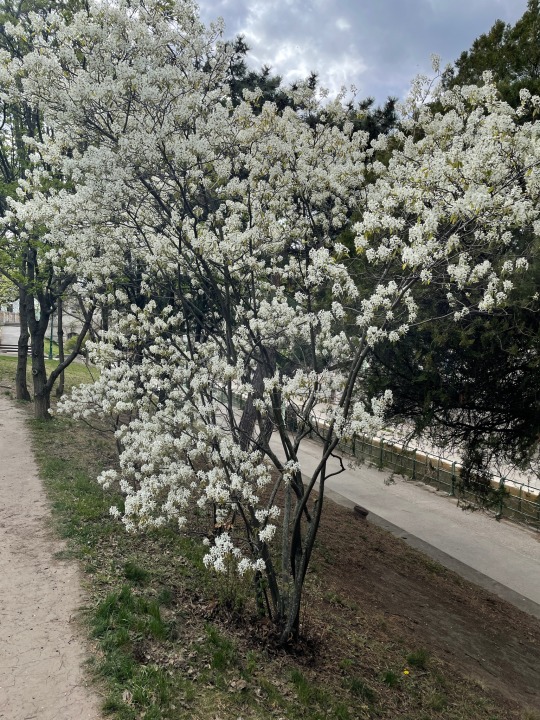


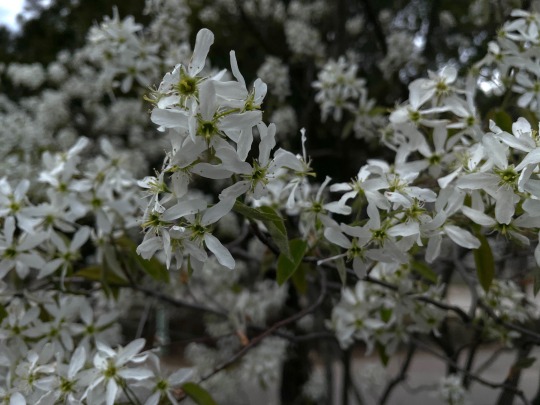


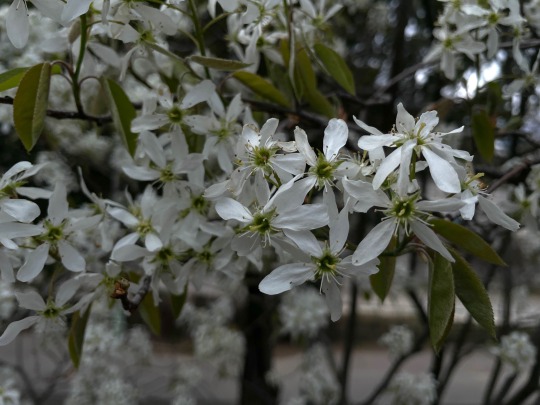


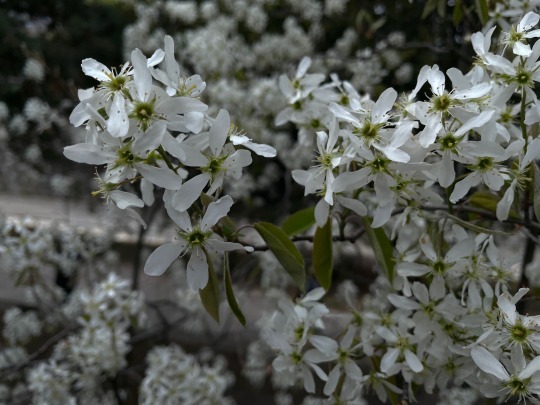
Amelanchier canadensis
#botanik#botanisiertrommel#ari fink photography#vienna#wien#urban nature#herbarium#aus meiner botanisiertrommel#botanical#urban garden#handymakro#1.4.2023#Kanadische Felsenbirne#stadtpark
0 notes
Text

近所の住宅で塀の中にある庭で咲いていた、
「ジューンベリー」の白い花。
ザイフリボク属。
別名:シュガープラム、
アメリカザイフリボク、
カナディアン・サービスベリー、
カラント・ツリー、
シャッドブッシュ。
欧文名:Amelanchier canadensis
撮影:iPhone14 Pro Max
30 notes
·
View notes
Video
n380_w1150 by Biodiversity Heritage Library
Via Flickr:
A guide to the wild flowers.. New York,F. A. Stokes[1899]. biodiversitylibrary.org/page/40764791
#United States#Wild flowers#New York Botanical Garden#LuEsther T. Mertz Library#bhl:page=40764791#dc:identifier=https://biodiversitylibrary.org/page/40764791#artist:name=Marian Ellis Rowan#Merian Ellis Rowan#HerNaturalHistory#Taxonomy:binomial=Amelanchier canadensis#Taxonomy:common=Canadian serviceberry#Taxonomy:family=Rosaceae#Taxonomy:common=Shad-bush#Serviceberry#WomenInScience#flickr#amelanchier canadensis#bilberry#canadian serviceberry#chuckle-berry#currant-tree#juneberry#shad-blow serviceberry#shad-blow#shadbush#shadbush serviceberry#sugarplum#thicket serviceberry
0 notes
Photo
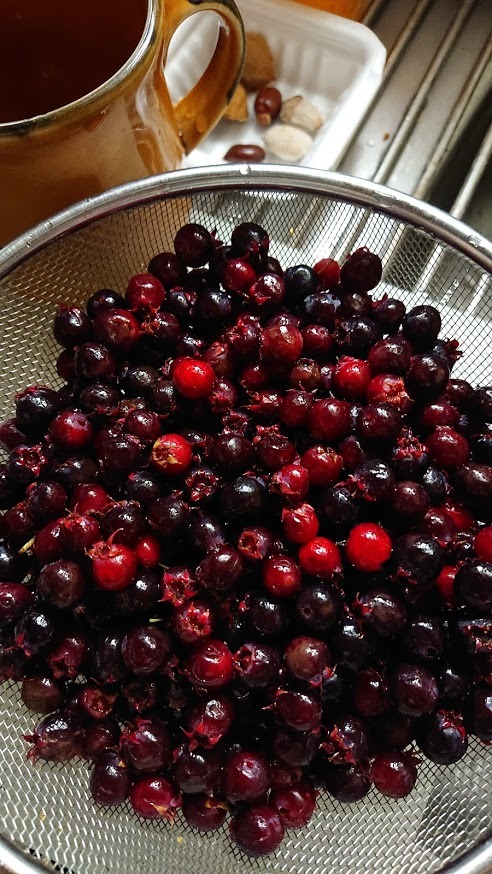

先日買った “ジューンベリー” は宝石のような綺麗な赤い実でした。味は薄く甘味があって、まとめて頬張ると、ちょっとブルーベリーっぽさもあるかな? しかしこれも足が速く、ちょっとの間にカビが生え出してしまうのです…。
大急ぎで、とりあえずジャムを作り、そのうちの2/3は卵と無塩バターを混ぜてジューンベリーカードにしました。ジャム作りの際にちょっと混ぜたカシスリキュールが良い仕事をしてくれたようです 😉
2枚目、左上がジューンベリージャム、その下がカード、右上はルバーブジャムで、下はビワジャムです。(実は作るばかりであまり消費しないので、なかなか無くならないの…😅)
58 notes
·
View notes
Text
Flower of the Week, 8th April 2024.
We have several trees and shrubs in bloom at the moment, including 2 Amelanchier Canadensis. This shrub, originating obviously enough from Canada, blossoms before the leaves grow.
After the blossom the shrub has a graceful, fan like or conical form. The red to purple berries are edible though taste wise, they’re nothing to get excited about. The autumn colours can be spectacular so it’s a plant…
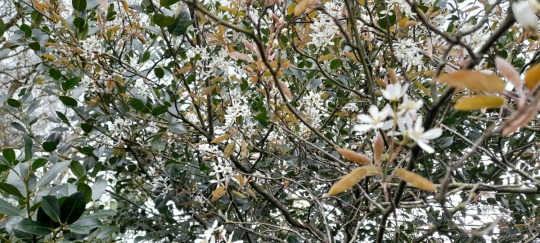
View On WordPress
0 notes
Photo

Yellow Warbler (Setophaga petechia) in a Blooming Shadbush (Amelanchier canadensis).
#Setophaga petechia#yellow warbler#Dendroica petechia#bird#flowers#shadbush#serviceberry#Amelanchier canadensis#bilberry#Canadian serviceberry#chuckle-berry#currant-tree#juneberry#thicket serviceberry#sugarplum#shad-blow#maine#spring migration#jada fitch#bird photography#yellow#white flowers#maine birds#YEWA
664 notes
·
View notes
Photo
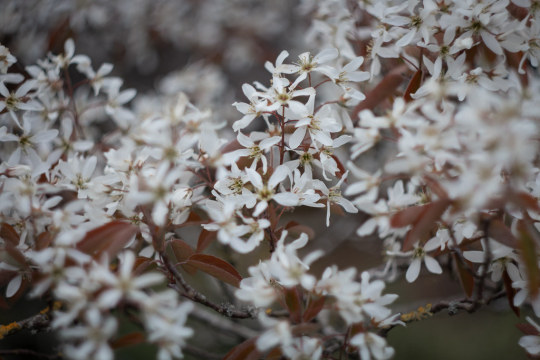
Amelanchier canadensis by HBroom
22 notes
·
View notes
Text
Dug out one of the areas the Canada goldenrod had planted itself in, which is a very bad spot for such an aggressive plant. Ended up with like an armload of rhizomes. Took one piece and transplanted it to the area I had initially planned for that species, but the one I ordered ended up being an aster of unknown species. I cut the shoots off the rest and will be eating them. Still have to grab the rest growing in the other area. Got all the weeds and garbage out of the front, and cut off and chopped of the dead bits. These will disappear as birds and squirrels take them to build their nests, but for now it’s a natural mulch. I didn’t have time for the side or the back, but I’ll do the side at least tomorrow. I did however take look through to see what’s coming up!
And so far, of the 172 plants I have planted (and I have 72 more on the way, starting mid-May!), the following are showing signs of life or even leafing out:
*EDITED TO ADD THOSE I NOTICED TODAY (DAY AFTER POSTING)*
001. Achillea millefolium (yarrow) 3rd year!
002. Adiantum pedatum (maidenhair fern) Survived its first winter into 2nd year!
003. Agastache foeniculum (anise hyssop) 4th year!
004. Agastache scrophulariifolia (purple giant hyssop) Survived its first winter into 2nd year!
005. Allium canadense (Canada garlic) 5th year!
006. Allium cernuum (nodding onion) 5th year!
007. Allium schoenoprasum (chives) 4th year!
008. Allium stellatum (pink onion) Survived its first winter into 2nd year!
009. Allium tricoccum (ramps) 3rd year!
010. Amelanchier canadensis (Canadian serviceberry) 4th year! But still too young for fruit.
011. Anaphalis margaritacea (pearly everlasting) 5th year!
012. Andromeda polifolia (bog rosemary) Survived its first winter into 2nd year!
013. Aquilegia brevistyla (smallflower columbine) 4th year!
014. Aquilegia canadensis (eastern red columbine) 5th year!
015. Arabis alpina (alpine rockcress) Survived its first winter into 2nd year! The first one I attempted was extremely root-bound coming out the pot and sadly did not survive the winter, but this one did!
016. Argentina anserina (silverweed) Survived its first winter into 2nd year!
017. Armeria maritima (Thrift seapink) 3rd year!
018. Aronia melanocarpa (black chokeberry) 3rd year! But still too young for fruit.
019. Artemisia ludoviciana (white sage) 3rd year! It was supposed to be A. frigida, but...it’s not. lol Thankfully it’s not too aggressive so far.
020. Aruncus dioicus (bride’s feathers) 3rd year!
021. Asarum canadense (Canada ginger) 4th year!
022. Asclepias incarnata (swamp milkweed) 4th year!
023. Asclepias sullivanti (prairie milkweed) Survived its first winter into 2nd year!
024. Asclepias syriaca (common milkweed) 3rd year!
025. Asimina triloba (pawpaw) 5th year! But still too young for fruit.
026. Asplenium trichomanes (maidenhair spleenwort) 3rd year!
027. Athyrium felix-femina (lady fern) 3rd year!
028. Caltha palustris (marsh marigold) 3rd year!
029. Campanula rotundifolia (harebell) 5th year!
030. Cardamine concenata (cutleaf toothwort) Came out of dormancy for it’s 1st year!
031. Castilleja miniata (giant red paintbrush) Survived its first winter into 2nd year! It’s a parasitic plant, so I planted it at the stone line so it could feed off the grass, and close to the sunchokes so it can feed off them too, plus there are cedar roots from the trees by the well, and I’ve just transplanted Canada goldenrod nearby so I think it will be okay!
032. Ceanothus americanus (New Jersey tea) 3rd year!
033. Cerastium arvense (field chickweed) 4th year!
034. Cercis canadensis (eastern redbud) 4th year! But still too young for flowers.
035. Clinopodium arkansanum (wild savoury) Survived its first winter into 2nd year!
036. Comptonia peregrina (Sweetfern) Survived its first winter into 2nd year!
037. Coreopsis lanceolata (lance-leaved tickseed) 3rd year!
038. Cornus canadensis (bunchberry) Survived its first winter into 2nd year! The squirrels did not dig it up this time!
039. Cornus florida (flowering dogwood) 3rd year! But still too young for flowers.
040. Cystopteris bulbifera (berry bladder fern) 3rd year!
041. Dalea purpurea (purple prairie clover)
042. Drymocallis arguta (prairie cinquefoil) Survived its first winter into 2nd year!
043. Echinacea purpurea (purple coneflower) 5th year!
044. Erigeron glabellus var. pubescens (streamside fleabane) Survived its first winter into 2nd year! I put it in a very narrow ugly side area. Should help to pretty it up along with black-eyed susan and whatever else I think will go nicely there.
045. Erythronium americanum (trout lily) 3rd year! And not only that but despite not flowering and my not seeing any dropper stems last year, the thing has somehow spread itself. I have no idea how I missed the number of droppers that would have been necessary to make this happen but I’m not complaining. Be nice if one of them flowered this year though.
046. Eupatorium purpureum (sweet Joe Pye weed) Survived its first winter into 2nd year!
047. Fragaria vesca (woodland strawberry) 3rd year! Mine has white strawberries. Apparently that can happen with this species. Still taste like strawberries. I hope it makes lots this year.
048. Fragaria virginiana (Virginia strawberry) 3rd year! Would be awesome if it made more than flowers this year though.
049. Galium boreale (northern bedstraw) Survived its first winter into 2nd year! My first attempt died. Probably because it was potted too long and planted too late.
050. Gaultheria procumbens (American wintergreen) 4th year! It’s not doing the greatest, likely due to how root-bound it was when I got it, but it’s been hanging on. I’m getting it a friend this year, so hopefully that will help.
051. Geranium maculatum (wild geranium) 4th year!
052. Geranium robertianum (herb Robert) Survived its first winter into 2nd year!
053. Geum aleppicum (yellow avens) 4th year at least! I don’t know for sure, because it was already here when I moved in. It’s native so it gets to stay.
054. Geum canadense (white avens) 4th year at least! I don’t know for sure, because it was already here when I moved in. It’s native so it gets to stay.
055. Geum rivale (purple avens) Survived its first winter into 2nd year!
056. Geum triflorum (prairie smoke) 5th year!
057. Grindelia squarrosa (curly cup gumweed) Survived its first winter into 2nd year!
058. Helianthus nuttallii (common tall sunflower) 4th year!
059. Heliopsis helianthoides (false sunflower) 3rd year!
060. Heuchera richardsonii (prairie alumroot) Survived its first winter into 2nd year!
061. Hibiscus moscheutos (swamp rose mallow) 4th year! And coming up early this year, too!
062. Hierochloe odorata (sweetgrass) 5th year! It flowered two years ago. I hope it does again this year.
063. Humulus lupulus (Hop) 3rd year! The current shoots are likely to die though Last year I swear they died five times before it finally took off but eventually it did and had a whole growing year. I expect the same this year.
064. Hydrophyllum virginianum (Virginia waterleaf) Survived its first winter into 2nd year!
065. Juglans nigra (black walnut) Likely somewhere around 150 years old, judging by the size. I obviously didn’t plant it, but it is on the property so it’s mine while I live here.
066. Juniperus horizontalis (creeping juniper) Survived its first winter into 2nd year!
067. Liatris spicata (dense blazing star) Survived its first winter into 2nd year!
068. Lilium michiganense (Michigan lily) 4th year!
069. Lindera benzoin (spicebush) 5th year and flowering!
070. Linum lewisii (blue flax) Survived its first winter into 2nd year!
071. Lysimachia ciliolata (fringed loosestrife) Survived its first winter into 2nd year!
072. Mahonia repens (creeping Oregon grape) 3rd year!
073. Maianthemum stellata (starry false Solomon’s seal) 3rd year!
074. Mentha arvensis (wild mint) 4th year!
075. Menyanthes trifoliata (bog bean) Survived its first winter into 2nd year!
076. Mertensia paniculata (tall bluebells) 4th year!
077. Mertensia virginica (Virginia bluebells) 3rd year!
078. Monarda fistulosa (wild bergamot) 5th year!
079. Monarda punctata (spotted beebalm) 3rd year! And coming in much quicker than last year.
080. Oenothera biennis (evening primrose) Seeded! I had thought my previous plant’s seeds hadn’t taken when no new plants had come up that year, but there are a couple this year close to the area I had it in, so it looks to have successfully reseeded itself after all!
081. Oenothera fruticosa (narrow-leaved sundrops) Survived its first winter into 2nd year! And this species is perennial rather than biennial like its cousin.
082. Oligoneuron rigida (Stiff goldenrod) Survived its first winter into 2nd year!
083. Onoclea sensibilis (Sensitive fern) 3rd year! I’m hoping the meadow sundrops, cup plant, and zigzag goldenrod will help shield it this year. They like part sun/part shade, but the past couple summers were still pretty hard on it.
084. Opuntia fragilis (fragile prickly pear) 4th year! The spring rains are always hard on it, though, and it takes at least a couple weeks in the heat of late spring to recover, so I don’t think it will produce fruit any time soon, certainly not this year.
085. Opuntia humifusa (eastern prickly pear) 3rd year! It did not like this winter though (took the one before it like a champ, though), but it’s showing signs of recovery.
086. Osmundastrum cinnamomea (cinnamon fern) Survived its first winter into 2nd year!
087. Oxalis stricta (yellow wood sorrel) Successfully reseeded! I mean, it basically grows as a weed, so it’s quite prolific. Doesn’t really have an effect on surrounding plants, though, and it’s delicate, so it’s good to have a ton of them if you want to cook desserts or make jams or something with them. They are deliciously tart.
088. Parthenocissus quinquefolia (Virginia creeper) 4th year! Might be older though. It was tiny when I got here (much bigger now!) but I didn’t plant it so I couldn’t judge its years based on size.
089. Phlox divaricata (woodland phlox) 3rd year!
090. Polygonatum biflorum (smooth Solomon’s seal) Survived its first winter into 2nd year!
091. Polystichum acrostichoides (Christmas fern) 3rd year!
092. Prunella vulgaris (common selfheal) I didn’t plant it so I don’t know how long it’s been here. We’ll call it year 5, but it is native and a pretty little thing, with edible and medicinal uses.
093. Prunus nigra (Canada plum) 3rd year! But still too young for fruit.
094. Prunus pumila (sand cherry) Survived its first winter into 2nd year!
095. Prunus serotina (black cherry) 4th year! But still too young for fruit.
096. Pycnanthemum tenuifolium (slender mountain mint) 4th year!
097. Pycnanthemum virginianum (Virginia mountain mint) 4th year!
098. Rhus aromatica (fragrant sumac) 5th year!
099. Rosa blanda (smooth rose) 4th year! Maybe it will bloom this year.
100. Rubus occidentalis (black raspberry) 5th year! This was supposed to be R. strigosus but...I discovered otherwise when the berries turned black instead of remaining red. lol
101. Rubus strigosus (American red raspberry) Survived its first winter into 2nd year! And is hopefully actually R. strigosus this time. lol Pretty sure it’s not R. occidentalis again, though, because it’s much more aggressive.
102. Sambucus canadensis (common elderberry) 5th year! Hopefully this year it makes more berries and they don’t all fall off before turning ripe this time.
103. Silphium perfoliatum (cup plant) Survived its first winter into 2nd year!
104. Sisyrinchium montanum (blue-eyed grass) Survived its first winter into 2nd year!
105. Solidago canadensis (Canada goldenrod) This is its 3rd year since planting itself! We’ll see how it likes the new area I put it in.
106. Solidago flexicaulis (zigzag goldenrod) 3rd year since planting itself!
107. Solidago nemoralis (grey goldenrod) 3rd year!
108. Solidago simplex (spike goldenrod) Survived its first winter into 2nd year! First one I tried died. Maybe wasn’t getting enough sunlight.
109. Spiraea alba (white meadowsweet) 5th year!
110. Sporobolus heterolepis (prairie dropseed) Survived its first winter into 2nd year!
111. Symphoricarpos occidentalis (western snowberry) Survived its first winter into 2nd year!
112. Symphoricarpos orbiculatus (coralberry) Survived its first winter into 2nd year!
113. Symphyotrichum ciliolatum (fringed blue aster) 4th year!
114. Symphyotrichum laeve (smooth aster) 4th year! And spreading where it shouldn’t. Going to try eating the shoots.
115. Symphyotrichum lanceolatum (panicled aster) 4th year! And I’m going to have to do something about those shoots too because that’s getting a little crazy.
116. Symphyotrichum novae-angliae (New England aster) 3rd year!
117. Thalictrum pubescens (tall meadow-rue)
118. Thuja occidentalis (eastern white cedar) Likely around 20 years old or so. There’s a row of them next to a wall. Mine while I live here.
119. Tradescantia ohiensis (Ohio spiderwort) Survived its first winter into 2nd year!
120. Trillium erectum (red trillium) Survived its first winter into 2nd year!
121. Trillium flexipes (nodding wake-robin) 3rd year!
122. Trillium grandiflorum (great white trillium) Survived its first winter into 2nd year!
123. Urtica gracilis (stinging nettle) 4th year since it planted itself in my garden at the old place and I took it with me to the new place!
124. Vaccinium angustifolium (lowbush blueberry) 5th year! Not doing well, though. I have to figure out a different spot for it.
125. Vaccinium corymbosom (northern highbush blueberry) 5th year! Last year I had to transplant it because it did not like the spot it was in. Hopefully it does better in its new home.
126. Verbena hastata (blue vervain) 3rd year!
127. Verbena stricta (hoary vervain) Survived its first winter into 2nd year!
128. Viburnum lentago (nannyberry) 4th year! But still too young for fruit.
129. Viburnum nudum cassinoides (witherod viburnum) 4th year! But still too young for fruit.
130. Viola blanda (sweet white violet) 4th year!
131. Viola canadensis (Canada violet) 4th year!
132. Viola labradorica (Labrador violet) Survived its first winter into 2nd year!
133. Viola nephrophylla (northern bog violet) Survived its first winter into 2nd year!
134. Viola palustris (marsh violet) Survived its first winter into 2nd year!
135. Vitis riparia (riverbank grape) 3rd year!
136. Waldsteinia fragarioides (barren strawberry) Survived its first winter into 2nd year!
137. Zizia aptera (heart-leaved alexanders) Survived its first winter into 2nd year!
138. Zizia aurea (golden alexanders) 4th year!
So most but it’s still early and I wasn’t looking super hard in the side and front areas, so we’ll see how many more will join us this year.
9 notes
·
View notes
